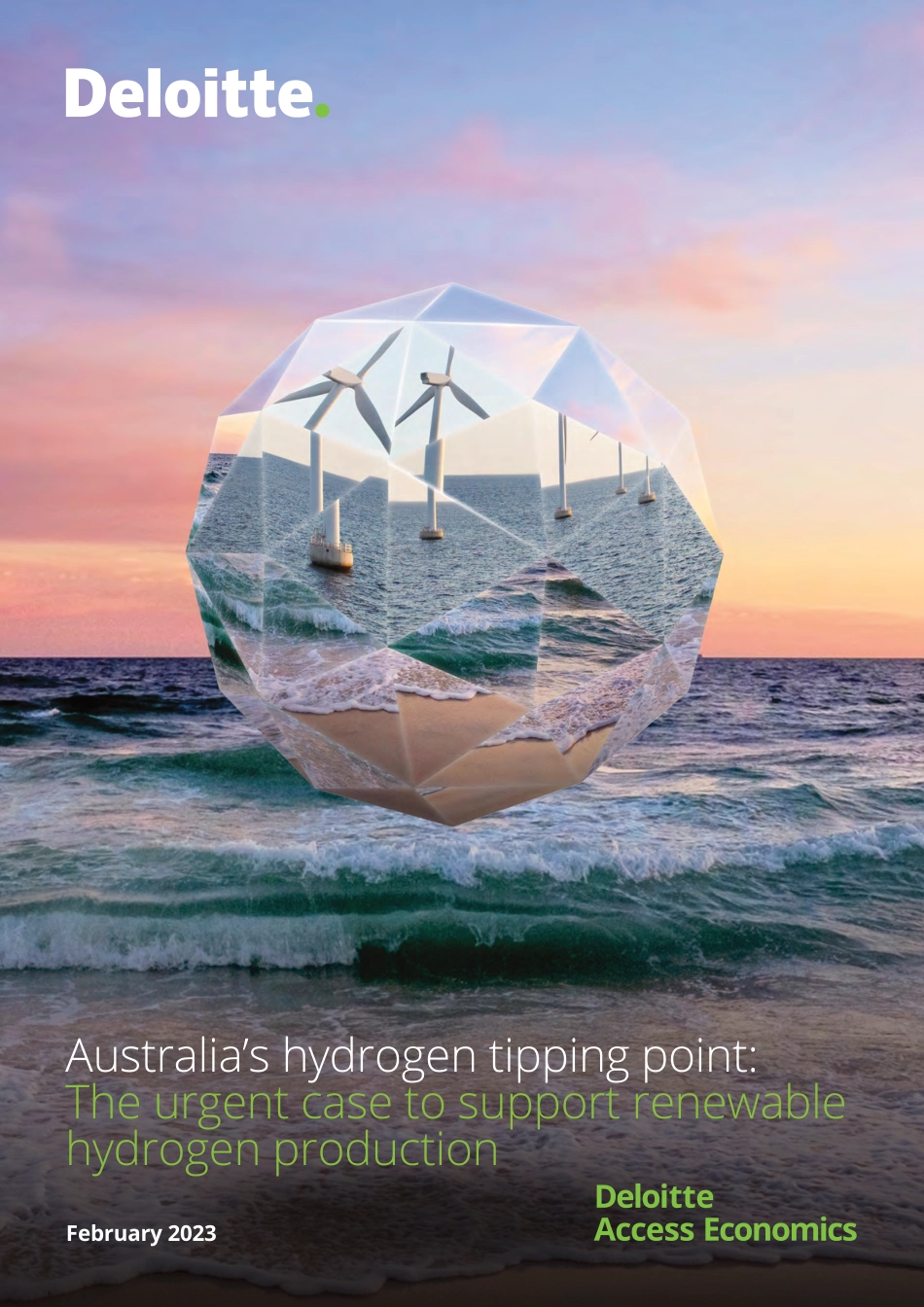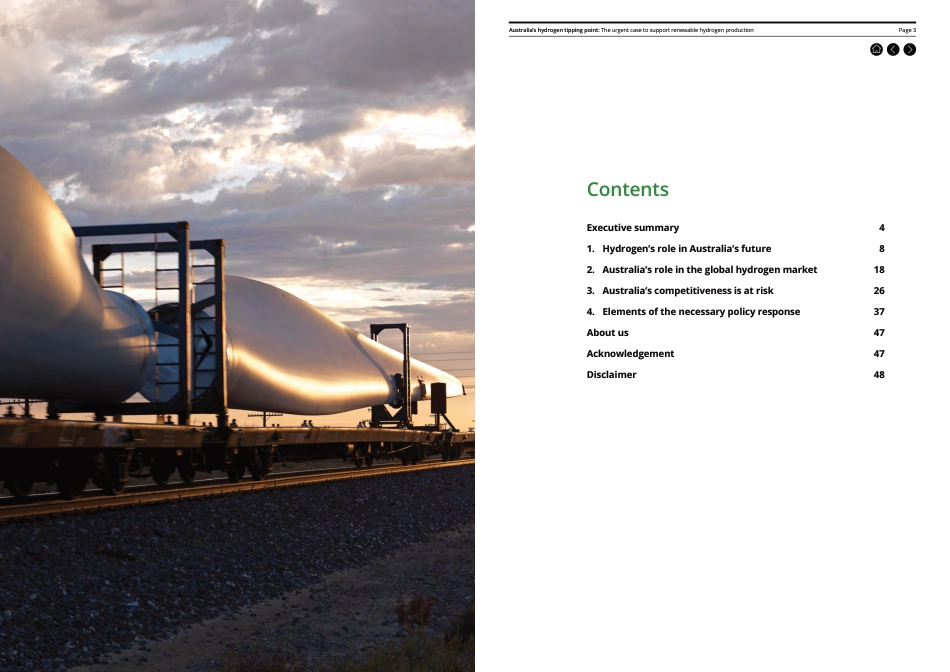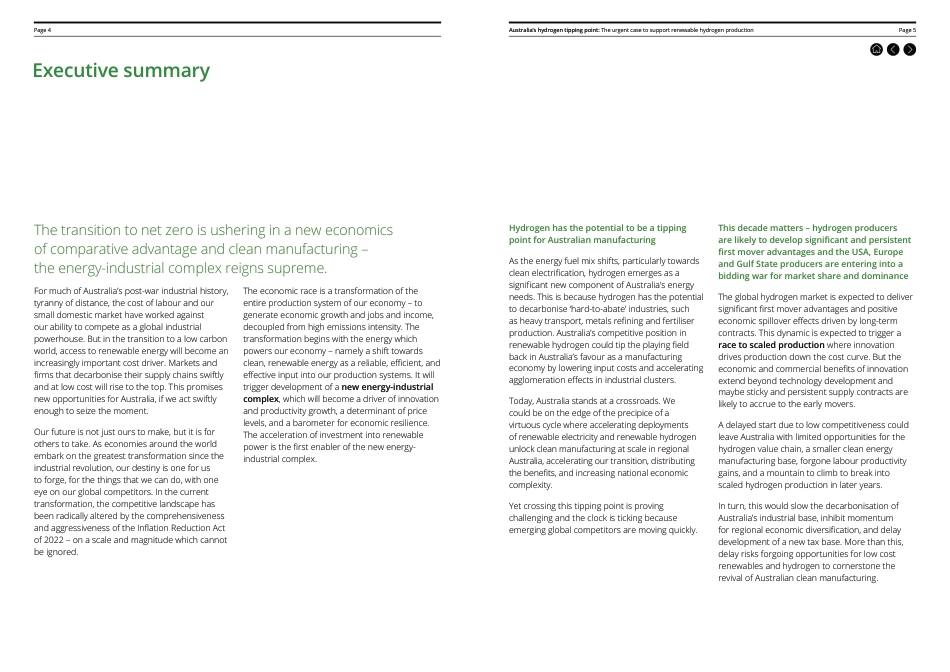Australia’s hydrogen tipping point:The urgent case to support renewable hydrogen productionFebruary 2023ContentsExecutive summary1. Hydrogen’s role in Australia’s future2. Australia’s role in the global hydrogen market3. Australia’s competitiveness is at risk4. Elements of the necessary policy responseAbout usAcknowledgementDisclaimer48182637474748Page 3Australia’s hydrogen tipping point: The urgent case to support renewable hydrogen productionExecutive summaryThe transition to net zero is ushering in a new economics of comparative advantage and clean manufacturing – the energy-industrial complex reigns supreme. For much of Australia’s post-war industrial history, tyranny of distance, the cost of labour and our small domestic market have worked against our ability to compete as a global industrial powerhouse. But in the transition to a low carbon world, access to renewable energy will become an increasingly important cost driver. Markets and firms that decarbonise their supply chains swiftly and at low cost will rise to the top. This promises new opportunities for Australia, if we act swiftly enough to seize the moment.Our future is not just ours to make, but it is for others to take. As economies around the world embark on the greatest transformation since the industrial revolution, our destiny is one for us to forge, for the things that we can do, with one eye on our global competitors. In the current transformation, the competitive landscape has been radically altered by the comprehensiveness and aggressiveness of the Inflation Reduction Act of 2022 – on a scale and magnitude which cannot be ignored.The economic race is a transformation of the entire production system of our economy – to generate eco...



